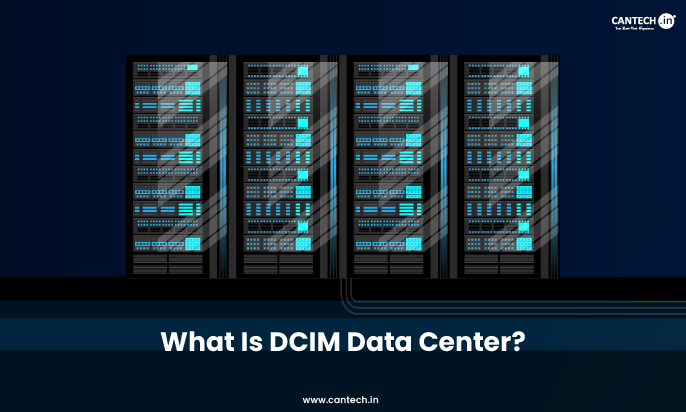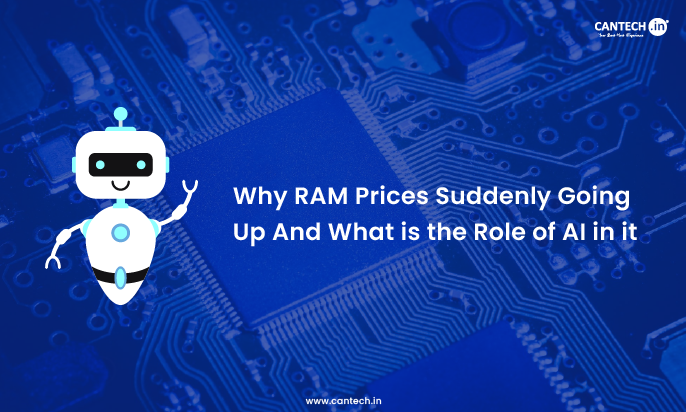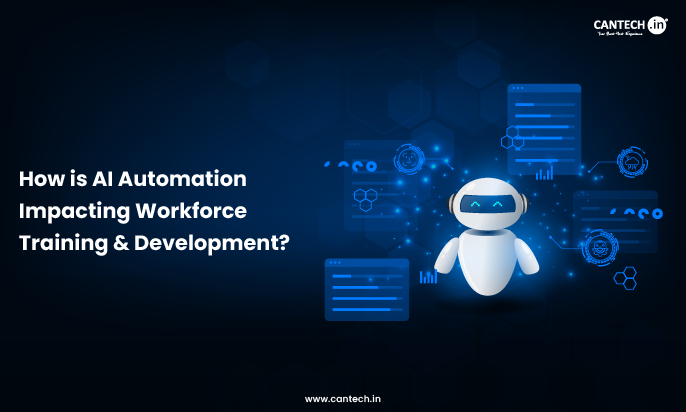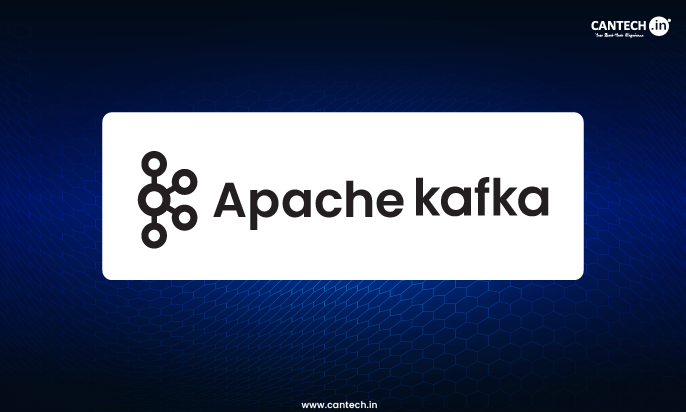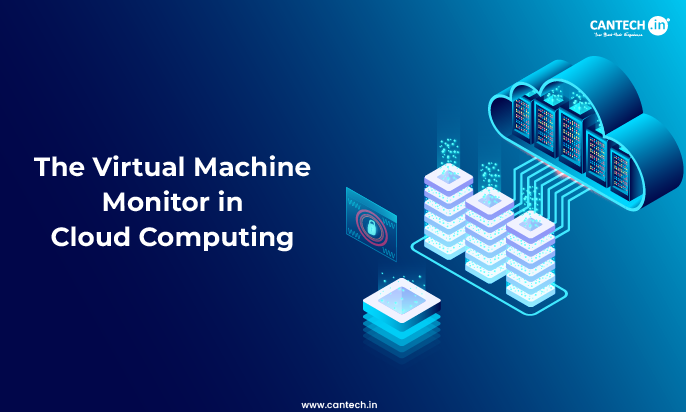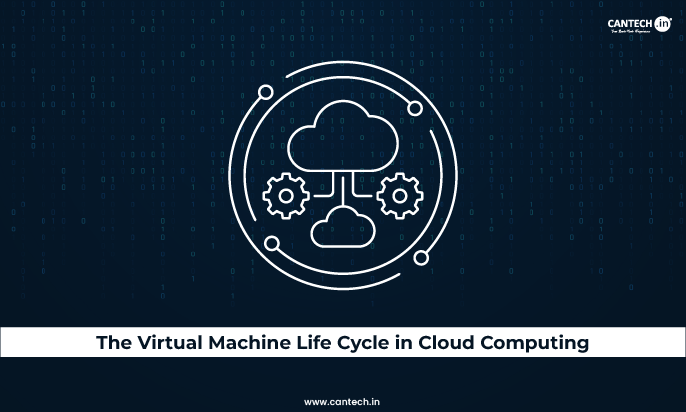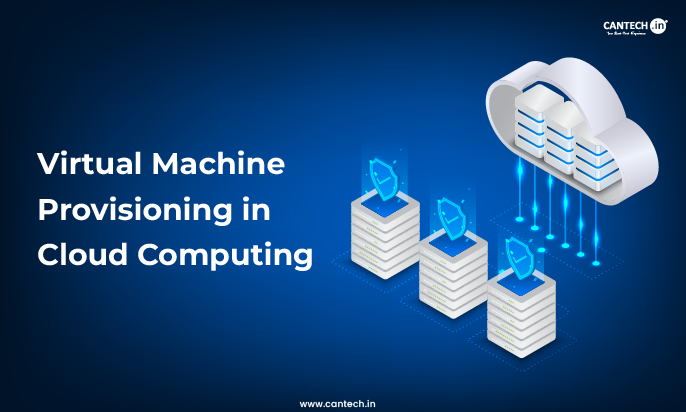Data Center Infrastructure Management (DCIM) is a type of software used in the operations of the data-centers to monitor, manage and measure not only the IT equipment servers, storage systems and networking devices but also supporting infrastructure like electricity unit services and cooling line and racks. DCIM provides a common ground to understand interplay between these disparate elements and where resources are used through a brokered understanding of the whole data-center environment.
Earlier, the IT staff was centerd on apps and servers and facilities were centred on the environmental controls of the building. The result of this fragmentation was characterized by inefficiencies, waste of resources and costliness of downtimes. DCIM software helps address this dilemma because it provides a unified picture of operations, which promotes teamwork and maximizes the efficiency of the whole data-center environment. In this blog, we will decode what is DCIM and how it transforms raw operational data into actionable insights using real-time data, analytics and visualization.
The Evolution and Necessity of DCIM
The data centers are becoming more complex and this is why DCIM (Data Center Infrastructure Management) is becoming vital.
Previously, spreadsheet and daily tracking may be used to track a few rows of servers. The situation is utterly different today:
- Increased Density: Current server designs pack more computing in reduced physical areas, resulting in greater heat and power consumption per rack.
- Hybrid Environments: A number of businesses combine on-premises, colocation and cloud infrastructure which adds additional dimensions to complexity.
- Data Criticality: IT systems are more relied on by businesses than ever before, therefore, downtime is not an option.
- Energy Efficiency Requirements: The increase in energy prices and the emergence of ecological issues move the necessity toward a more effective power and cooling optimization.
Core Capabilities and Features of DCIM Software
DCIM software offers a significant number of basic capabilities and features that enable users to have an unrivaled visibility and control. These can be divided into various broad sections.
The Asset Management and Tracking
One of the key DCIM objectives is maintaining an inventory of all the data-center assets. The solution is not only about the existence of equipment, but also about its position: all servers, switches, PDUs, or patch panels are placed, generally, within the racks and rows.
- Visual Representation: The majority of DCIM tools provide the 3D floor picture, racks, and even the server units. This one-pane-of-glass allows operators to know what is stashed where, get a context on the equipment, and allocate space in a better way. This kind of a view supersedes old spreadsheets and eliminates errors making it efficient.
- Connectivity Mapping: DCIM monitors more than geographical connectivity. It depicts power connections between UPS appliances and servers, networks between switch and ports, and fiber-optics between media converters and end appliances. This elaborate plan is a requisite in problem solving, upgrading, and adhering to cabling codes.
Power Management and Control
The data center depends on power, it is its highest expense and its greatest threat. DCIM will provide information about power utilization and capacity.
- Real-time Monitoring: DCIM tool monitors power consumption locally–at the utility feed, to outlets on a PDU. The information reveals power-greedy gadgets and hot zones.
- Capacity Planning: Understanding present power consumption and unused capacity enables the operators to introduce new equipment that may not overload the circuits. This avoids blown fuses, idle time and maintains the power usage effectiveness (PUE) high.
Environment Monitoring And Cooling Optimization
Quality cooling is mandatory in ensuring equipment durability and optimum performance. DCIM aids in the way the data center environment is maintained.
- Temperature and Humidity: DCIM is connected to environment sensors that are installed throughout a data center that measure temperature, humidity, and airflow to identify the cooling needs of each location. This assists in detection of hot spots, cold spots and zones that are not cooling well.
- Cooling Optimization: With the information on environment, operators can use cooling systems (LCRAC/CRAH units, chillers) to control air flow needs in the most accurate way to avoid excessive cooling thus minimizing energy wastage. This is to maximize cooling efficiency and keep equipment out of harm in the states of being overheated.
Space Management
With densification of the data centers, it would be important to optimize the physical space. DCIM offers to effectively solve the floor space and rack capacity utilization.
- Rack Utilization: DCIM tools display available rack units (U-space) and weight capacity, so there is the ability to plan out equipment deployment more accurately. This avoids wastage of space and also it ensures that racks are not overloaded.
- Future Planning: This helps organizations to estimate the space requirement in the future with considerable precision by examining the existing space utilization and growth trend; and accordingly, make informed decisions regarding expansion or merger in a timely manner.
Change Management & Workflow
Improving modifications in a data center is tough and poses much risk. DCIM makes such tasks simpler.
- Automated Workflows: Asset deployment, power provisioning and connectivity change are some of the tasks that can be automated with DCIM. This reduces errors and maintains processes the same.
- Impact Analysis: DCIM can analyze the effect of any change on power, cooling, and connectivity before that change has taken place, for example a server decommission. This preventive action prevents outages and improves security levels in general, eliminating human error.
Key Benefits of DCIM
Installing an effective Data Center Infrastructure Management (DCIM) solution can make a difference to your bottom line and realise the following long-term strategic and short-term functional benefits.
1. Improved Efficiency and Reduced Costs
Amid the most quick to be experienced benefits of DCIM is the steep rise in efficiency and the savings it brings. The system allows you to identify the so-called ghost servers (equipment that consumes power but is doing no useful work) and other underutilised assets by providing real-time views of power consumption. Recycling or re-use of such items can enhance the efficiency of power usage (PUE), reduce power bills and in most cases will reduce the largest element of a data center budget.
Proper asset tracking and capacity planning also reduces the urge to purchase new racks or power distribution units simply because you cannot see how much you actually have in space or power. DCIM assists you to make the best use of what you have. This clever utilisation of resources helps you to postpone new acquisitions, overload the existing equipment, reduce overheads and have a great payoff on the investment.
2. Enhanced Reliability/Uptime
The worst thing the data center can deal with is downtime. Not only does downtime cost money it also damages reputation. The DCIM software supports the inhibition of downtime. It locates issues early by monitoring power, cooling, temperature, and other essential variables. It is capable of delivering alerts (email or text) when the temperature is too high, or power has changed, and when a vital piece of equipment has malfunctioned. This will enable employees to take immediate action before it becomes bigger.
Transparent visualization and what-if testing reduces human error, which is a major source of outages. By understanding potential impacts before executing a move, add, or change (MAC), operators can mitigate risks. Depending on what could occur, they will be able to reduce risk and stabilize the center. This active approach to problem solving does go hand in hand with precise resource management, which helps make a more secure network by diminishing weak points, which unplanned changes bring about.
3. Optimized Capacity Planning
Data center managers continuously understand when to put in place additional power, cooling, space and network connections. DCIM systems provide the information they require in detail. They will know with DCIM precisely how much power, cooling, space, and connectivity they already consume. These data contain visible tendencies according to which they make decisions about where and when it is better to install new equipment or even construct larger plants.
Through effective utilization of all available resources, business organizations are able to delay new building constructions or new equipment purchases. They are also able to maintain expansion projects and make sure that their data center resources follow the business, neither being under or over capacity.
4. Enhanced Security and Compliance
Data center infrastructure management (DCIM) is no cybersecurity product unto itself but builds both cybersecurity practices and compliance. Since DCIM maintains an accurate list, in real time, of all the assets there, security staff can view where each item stands and connect all the dots. This assists them in charting the attack area and protecting themselves.
The use of DCIM also keeps track of patch levels, which is usually not used in actual patch applications, so they are aware of what systems are recently updated and are far less vulnerable than others are. Fixed logging enables the recording of the physical changes, movements of assets, temperature, humidity and other environmental parameters. Such logs are of critical importance to forensic investigation after a security breach occurs. Strong Incident response and management practices can further help teams act quickly on these insights and reduce the impact of potential threats.
DCIM is multi-compliance also as it can provide data that can be proven regarding location, power consumption as well as temperature. Best practice environmental procedures and follow the sun physical security policies are also simpler to demonstrate using the open documentation that DCIM offers. This expansive visibility establishes an improved security profile and meets the high compliance levels of data centers.
5. Improved Collaborating and Communication
Prior to Data Center Infrastructure Management (DCIM) the two populations that operated and maintained the systems of a data center and the operations that cared about the building existed in dissimilar worlds. That division promoted miscommunication, the blame game in case of failure and counterproductive work. Finally DCIM linked that gap. It is now the case that IT personnel and facilities workers have real-time information about all aspects of the data center.
This combined perception will enable the IT planners to know the quantity of power or cooled air remaining before installing new servers, and likewise help the facilities crews know what type of systems IT will need next. In case of a problem, two parties are able to see the same information hence expediting troubleshooting and repairing the problem. Through the cooperation, the daily operations become easier and the DCIM itself will be more empowered, becoming an informed decision-making and a more peaceful team at the end of the day.
Common Challenges in DCIM Implementation
DCIM (Data Center Infrastructure Management) has a lot of benefits, however it is often not an easy task to implement and to obtain its maximum benefit. Organizations are faced with most problems. When not properly managed success can be sabotaged and returns on investment decreased. Being prepared on what the problems are would facilitate a better implementation.
1. Incompatibility to the Old Systems
One of the main challenges here is the integration of DCIM software with tools that are already in the IT and facility. The data centers today typically operate in conjunction with other systems i.e, IT Service Management (ITSM) and Configuration Management Databases (CMDBs), Building Management Systems (BMS), Network Monitoring Systems (NMS) and others. It might be a complex task to make these systems share data and interact with each other, to make this happen with middle-aged equipment that does not provide modern APIs or even universal protocols. This may lead to data silos, manual data of entry, and an incomplete picture of daily activities of the data center.
Glossary: Data silos are isolated repositories of data within an organization, where information is stored in separate systems or departments and not easily accessible or shared with other parts of the organization.
2. Heavy Initial Investment and Maintenance Costs
Acquisition of DCIM tools requires significant immediate expenditure that in most instances will encompass the licensing of software, and equipment including sensors and intelligent PCI devices as well as professional services needed to set up and customize.
- Organisations have to make continued expenditures in maintenance, technical support, and constant staff training after the purchase.
- In justifying the investment, organizations need to develop a good business plan which clearly indicates how the system would lead to long term savings and operational effectiveness that would result in a positive return on investment (ROI) in the long run.
3. The Challenge of Data Accuracy and Consistency
Information in a DCIM software will only be useful when it is accurate and consistent. Transferring the information stored on spreadsheets or individual databases may also be very difficult, given that there is no uniform format to adopt. Any error in the first set of data will create errors in the analytics, capacity plans will not work and even the daily choices will err. They have to plan to maintain the information credible:
- Explore all the devices with a wholesale audit.
- Be extra alert in checking facts.
- Establish regular verifications to update information and make it accurate.
4. Organizational Resistance and Skill Gaps
Data Center Infrastructure Management (DCIM) system is a tool which aids IT and facilities organization in operation of data centers. Its introduction can be associated with adjustment of current workflows and processes. Certain employees might also be opposing these changes since they are accustomed to the old system of doing things.
Having a DCIM system requires individuals to have new skills. Companies are encouraged to provide in-depth, role-based training to ensure that all people working in teams know how the system functions and why it is so important. By doing so, adoption is encouraged and the tool would be able to expand to the limit.
5. DCIM is an Ongoing Journey, Not a One-Time Project
DCIM is not a project but a journey. Most organizations believe that DCIM implementation is a process of setting it and forgetting it. The fact is that a data center is in a state of constant transition: equipment is upgraded, workloads changed, and business requirements evolve.
That is why DCIM requires constant monitoring, new information, constant optimization, and periodical review of strategies. When you apply a DCIM as a static object, the data will lose its currency, results will diminish and the solution can be rendered underused or even dormant in the long run.
The Future of Data Center Management
Data centers will continue to grow in size and significance thus organizations need to focus more on Data Center Infrastructure Management (DCIM). DCIM will integrate with AI and machine learning into predictive analytics, workflows will be automated more closely, and DCIM will be closely synchronized with hybrid cloud management platforms. To cut it short, DCIM has become an essential part of any organization, which plans to optimize its digital infrastructure, make it reliable, efficient, and secure in the years to come.
Wrap Up
So, have you understood, what is DCIM? In essence, DCIM cannot be a mere casual software piece but a prior company strategy of any contemporary organization. Providing unrivaled visibility and control over their IT and facility infrastructure, such DCIM software allows teams to work more efficiently, ensuring important uptime, and optimally utilize its resources. It seals critical operational gaps, resulting in the tangible DCIM benefits, lower energy, longer equipment life, and reliability. The use of a good DCIM solution makes the data center more robust, cost-efficient, and sustainably operated in the future, which is the foundation of a digital expansion path.
The integration complications and the need for precise data may arise during the implementation of DCIM tools but the payoffs will rank much higher in the longer term. An effective Data Center Infrastructure Management (DCIM) strategy transforms the data center, which is viewed as a reactive cost centre into a proactive, optimized and secure business driver. It helps to make wise choices, properly mitigate risks, and scale up operations with confidence, so that the digital infrastructure is prepared to fulfill the needs of the following day.
Related: What is an Edge Data Center?
FAQs
Is DCIM only useful for very large data centers?
No, DCIM software benefits data centers of all sizes by providing essential visibility and control for optimized operations.
How does DCIM contribute to data center sustainability?
DCIM tools help optimize power and cooling, identify energy waste, and track PUE, significantly contributing to greener IT operations.
Can DCIM prevent all data center outages?
While DCIM significantly reduces the risk of outages through proactive monitoring and management, it’s a tool that supports prevention, not a guarantee against all unforeseen failures.
What’s the main difference between DCIM and a CMDB (Configuration Management Database)?
A CMDB primarily tracks logical IT assets and their relationships, while DCIM focuses on managing the physical data center infrastructure and its interaction with IT equipment.
